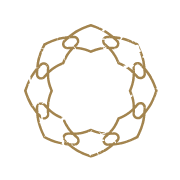The Three T’s of the Progression/Regression Model
The other day, I was training a progression of the front lever—a movement I hadn’t touched in a while. To my surprise, it felt great. I managed three solid reps before collapsing in a heap of satisfaction and exhaustion. Emboldened by the progress, I thought, “Why not try the next progression?”
As I began to set up, I caught myself. “Practice what you preach,” I muttered, peppering the thought with a bit of choice French. What do I preach? The progression/regression model. It’s not just a training buzzword; it’s the foundation of safe and effective movement. I was about to let ego take over, risking my long-term health for short-term gratification. Instead, I let maturity win. I stuck with the same regression, vowing to stay there until I could do it effortlessly.
This experience reminded me why the progression/regression model is so essential—not just for safety, but for sustainable growth.
What is the Progression/Regression Model?
The progression/regression model is a systematic way of modifying exercises to suit an individual’s ability. Progressions add complexity or load, driving adaptation. Regressions simplify movements, building strength, skill, and resilience.
For instance, a beginner learning to squat may start with bodyweight before gradually adding load. The model becomes more nuanced with skill-based or bodyweight movements like the Snatch or pull up. Regardless of the exercise, the goal is the same: to train effectively within current capacity while respecting the body’s limits.
For an obvious example, someone starting out will squat with a light weight. As they get stronger, they will need to add weight. The concept becomes much more nuanced when we talk about bodyweight and complex skill movements. Despite the nuance, the reasoning behind the model’s importance ensures that every person, regardless of skill level, can train effectively within their current capacity.
Intensity and Time Under Tension
For an exercise to work, the muscles used in the movement must work at an intensity that takes the body out of homeostasis, the body’s desired state of rest. A key component of intensity is time under tension. This quite literally means the time muscles are working.
Therefore, it’s important that I find a progression that allows me to actually contract the muscles. For example, in a push-up, the goal of the movement is to train my core to connect my lower and upper body, my shoulder blades to move in sequence with my elbows, and the muscles around those joints to coordinate it all. If I pick a progression that I can’t hold, feel the muscles, or maintain the joint structures, I end up training my body to use compensated patterns. I will most likely dump all of the weight into the lower back, the fronts of the shoulders, and my neck, resulting in the exact opposite of my goal.
Instead, I need to find the progression that allows me to feel the muscles, understand the joint angles, and build connection between the intention of the movement and the outcome.
For many, that feels like they are cheating, but the reality is doing a progression that you can’t maintain tension in is the cheat! This attempt at speeding up the process ends up doing the opposite.
Tendon Strength
Maintaining a connection between intention and outcome is huge when it comes to limiting overuse injuries. If I can feel the appropriate muscles working, then there is a good chance my joints will stay healthy and happy for a long time. However, something we seldom think about is the lag between muscular strength and tendon strength.
Because of the blood supply, cell composition, and blood flow, muscles get stronger a lot quicker than tendons. This means that tendons need more reps, more movements, and more exposure at below-maximal efforts in order to adapt.
Going back to my original example of the front lever: if I moved on to a progression that technically I might have been able to do for a rep or two, maybe my muscles would adapt. But the tendons and ligaments would not be happy. Because I was only getting three reps of the previous variation, I clearly haven’t allowed for enough of an adaptive process to happen, and my tendons would eventually start to talk. Hello, elbow tendonitis.
Using the progression/regression model to hold me at the appropriate level of exercise until it feels easy enough to do a significant number of reps means that I have given my tendons enough time to ‘catch up.’
Togetherness
Implementing this model effectively requires awareness and education. It means connecting with the practice in a mature way that involves connecting with your body, your goals, and your coaches. It also means we can create a gym where experienced members can work alongside beginners, with neither feeling like they are being challenged too much or too little.
This inclusivity is something I am so passionate about ensuring Uptown Movement keeps and grows. Not only does the progression you are on serve you, but it also demonstrates the path forward to the person beside you. Working on our individual needs but doing it together!
Conclusion
At its core, the progression/regression model is a systematic way of modifying exercises to match an individual’s current ability. The progression/regression model is more than a tool; it’s a mindset. It respects the individual journey of every trainee, prioritizing safety and sustainability over short-term gains. By embracing this adaptable approach, we not only limit injuries but create a culture of mindful, lifelong movement. Because the goal isn’t just to train hard—it’s to train smart, stay injury-free, and keep moving for years to come.


